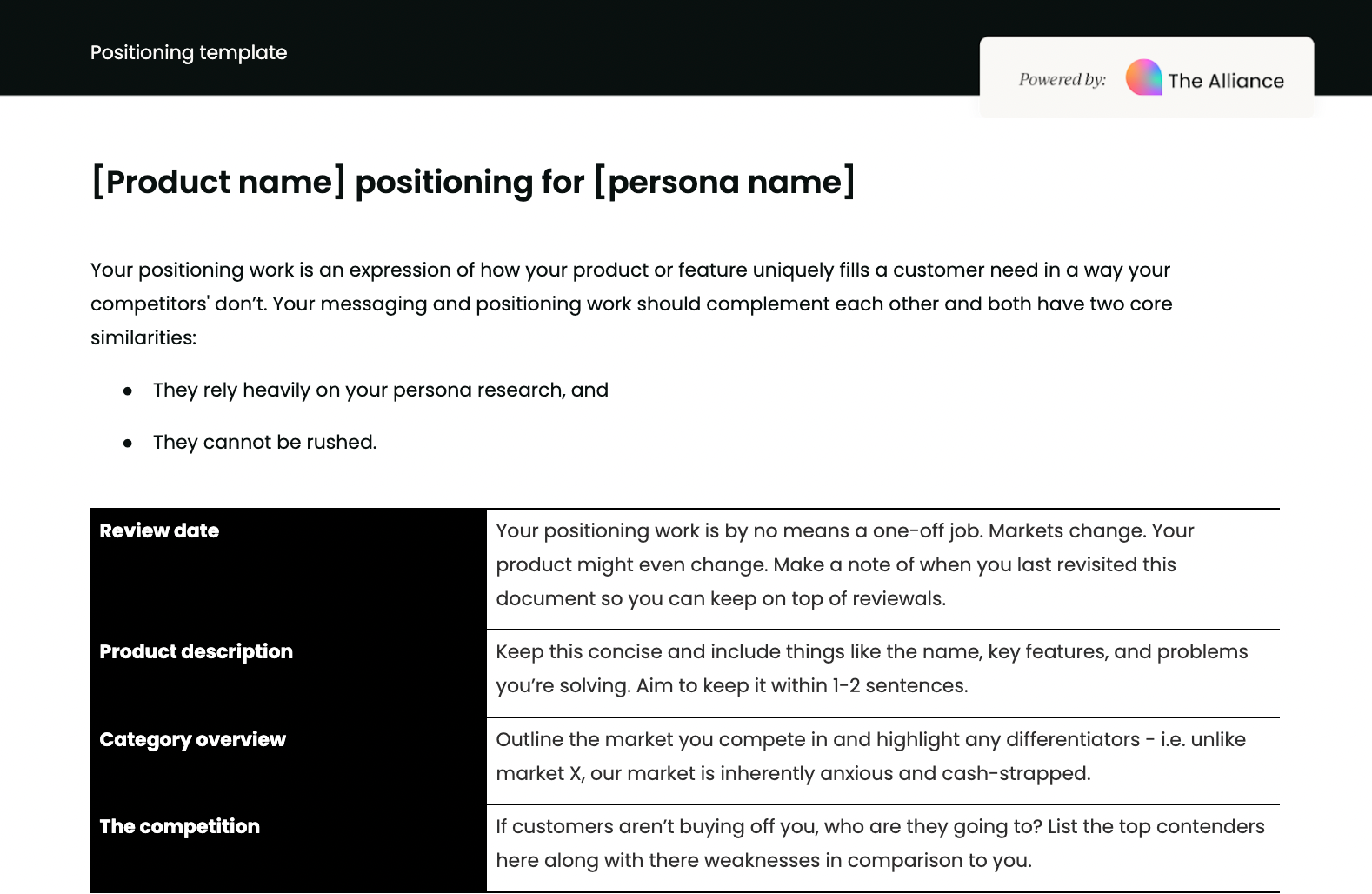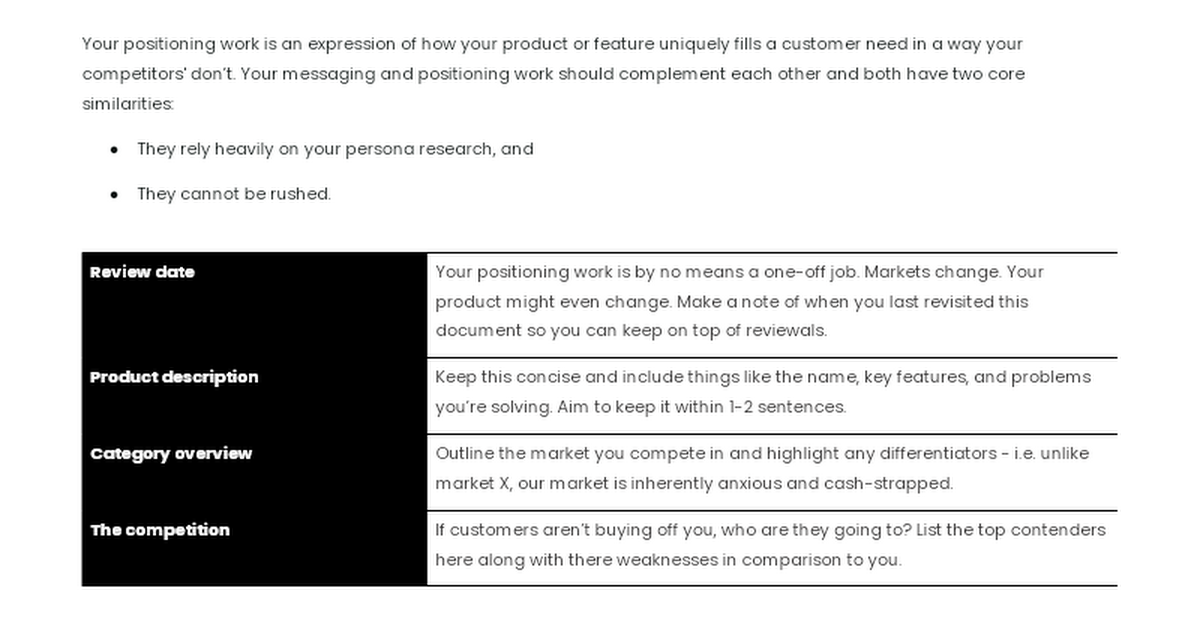What is a product positioning template?
Our product positioning template is a strategic tool designed to help product marketers articulate how a product uniquely meets customer needs in ways that competitors do not.
The downloadable template provides a structured approach for developing a clear and compelling value proposition, ensuring your product stands out in the market and resonates with your target audience. This template is essential for aligning your product's messaging and positioning with customer expectations and market dynamics.
What are the key components of a brand positioning document?
- Product description: A concise summary of your product, including key features and the problems it solves.
- Category overview: An outline of the market you compete in, highlighting any unique characteristics and differentiators.
- The competition: Identification of top competitors and their weaknesses compared to your product.
- Persona overview: Detailed descriptions of your target personas, ensuring your positioning is tailored to their specific needs and preferences.
- Unique differentiators: Clear identification of what makes your product stand out from competitors, focusing on unique attributes.
- Challenges and values: Explanation of the customer problems your product addresses and how its unique features provide solutions, using emotional and practical insights.
Sound useful? We thought so!
Let's take a look at how to use it.
How to use this product positioning template
Using the product positioning template effectively can enhance your marketing efforts and ensure consistent messaging.
The template should be self-explanatory, but in case you need some additional guidance on how to use it, here's a quick step-by-step guide:
Step-by-step guide:
- Conduct thorough research: Start by gathering detailed data on the market, competitors, and customer needs. This will form the foundation of your positioning strategy.
- Define your product description: Write a concise summary of your product, including its name, key features, and the problems it solves. Aim to keep it within 1-2 sentences.
- Outline your category: Describe the market you compete in and highlight what makes your market unique. Mention any specific characteristics that differentiate your market from others.
- Analyze the competition: Identify your top competitors and list their weaknesses in comparison to your product. Understand where your product has a competitive edge.
- Develop persona overviews: Create detailed personas for your target audience. If your personas are very different, consider creating separate positioning documents for each.
- Identify unique differentiators: Clearly outline what makes your product unique. Ensure these differentiators are truly unique and not shared by competitors.
- Detail challenges and values: For each unique differentiator, explain the customer problems it addresses and how your product provides a solution. Use emotional and practical insights to make your points compelling.
- Review and update regularly: Positioning is not a one-off task. Regularly review and update your positioning document to ensure it stays relevant with market changes and evolving customer needs.
By following these steps, you can create a robust product positioning strategy that helps your product stand out in the market and resonate with your target audience.
Download your product positioning template
If you’re not already a member, simply sign up to our free plan and refresh this page to access your template.








.png)
.png)












 Follow us on LinkedIn
Follow us on LinkedIn 

.svg?v=a55345d682)